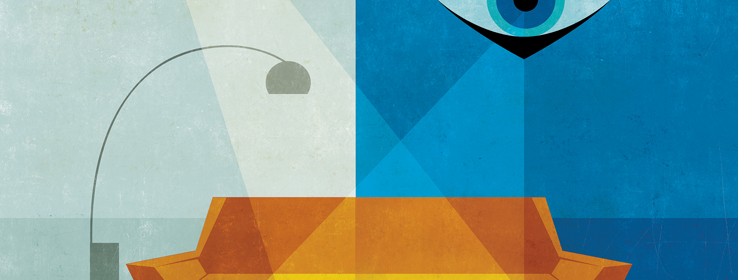Color perception changes throughout the day. Here’s what you need to know about the sun’s changing influence.
by Tad Simons
Is that wall yellow, beige or tan?
Depending on the time of day, it could be any of the three.
As the angle and intensity of the sun shift, the wavelengths reflected from the objects around us shift along with them. In order for design professionals to accurately account for these subtle but constant changes, it helps to understand what our eyes and brains are doing when they process color.
Human beings are what’s called “diurnal,” which means our eyes have evolved to see better during the day than night. Over the course of a day, your brain spends a lot of time sorting through light waves, assessing so-called “chromatic bias” to figure out what color you’re really observing.
According to Bevil Conway, associate professor of neuroscience at Wellesley College in Massachusetts, “Every natural light source has a chromatic bias, and the brain is surprisingly good at removing this bias to determine color.” Much better than a camera, for instance.
Morning and evening have an orange bias, while midday light under a clear sky has a blue bias. As the quality and angle of light changes, the brain automatically adjusts for these shifts by subtracting the prevailing bias — orange or blue in natural light — to maintain accurate color perception.
But the system isn’t perfect. Where the brain must work hardest, Conway says, is during transition periods from dawn to early morning, and from twilight and dusk to dark, when the timing of the light changes is the most rapid.
“One of the reasons our brains find sunsets so thrilling is that we can see the color biases changing,” Conway says. But if you are assessing colors in a room, these are also the times of day when the brain’s perception of color are constantly in flux and, hence, the worst times to make color decisions.
Experience does matter, though. According to Conway, the brain not only uses the immediate color data coming through the eye at any given moment, it also compares that information to a vast database of prior experience to arrive at its best color guess. Though the brain can be fooled, Conway says, its previous experience guides it toward more accurate perceptions of color in the future.
Tips to Improve Your Color Confidence
The only way to be absolutely sure what a color will look like under different lighting conditions is to observe it firsthand.: The sun’s angle and direction, as well as the amount and quality of artificial light, can have dramatic impact on color perception. Northern-facing rooms tend to skew blue during the day, and western-facing windows are affected most by the orange shift at sunset.
Colors appear truest in the middle of the day under indirect natural sunlight.: Too much sunlight can wash them out, however, while too little (morning and evening) tends to darken them. Oranges and reds can intensify later in the day, and as the light dims, darker colors become duller and harder to distinguish.
What we perceive as “colors” are really surfaces reflecting and absorbing various wavelengths of light. : Everything in a room can affect color perception — furniture, carpet, drapes, bookshelves — which is why a blank wall in an empty room can look dramatically different when that same room is furnished.
Use window blinds to control the amount of direct light entering a room.: While opening and closing them, pay careful attention to subtle shifts in color. This will help you anticipate other color shifts as the light changes throughout the day.
Like natural light, artificial light has its own color biases.: Incandescent bulbs have a warm orange shift. Fluorescent bulbs provide a cool blue light. LED light is whiter and more neutral but can also be programmed for different wavelengths and intensities, making it an increasingly popular indoor lighting option.
Most pigments aren’t 100 percent light-stable.: This means that they actually break down with prolonged light exposure, especially under UV light. So, if you have a richly colored object or painting, keep it out of direct sunlight, or put it under UV-conservation glass.





